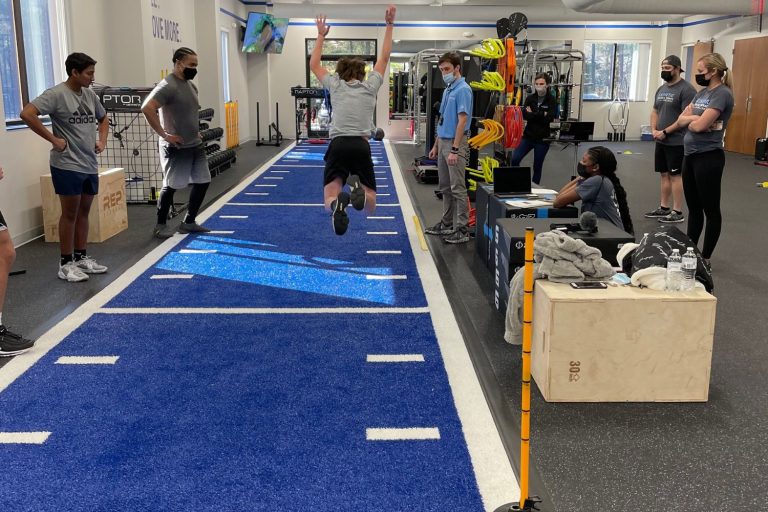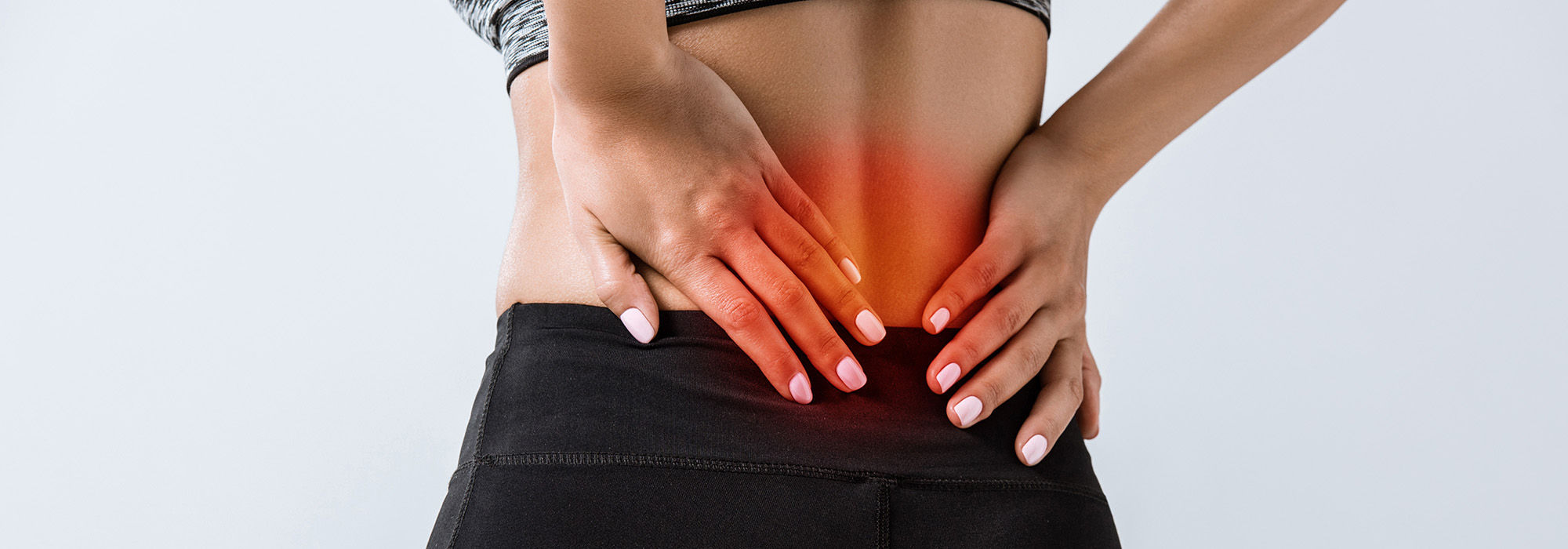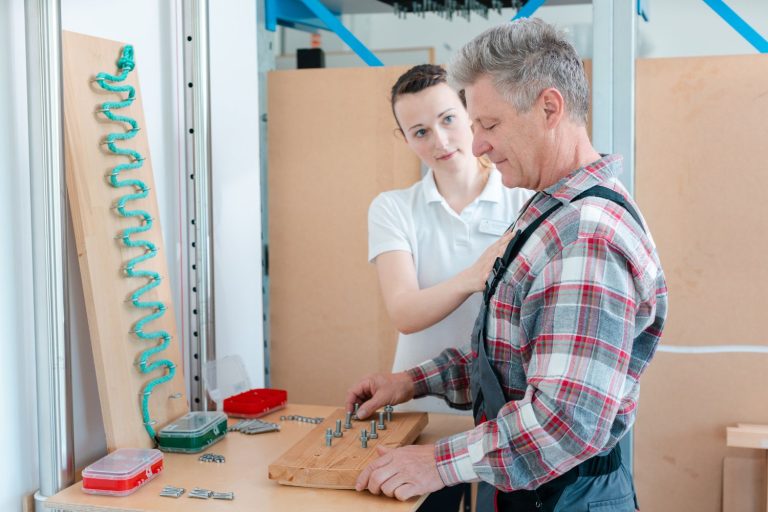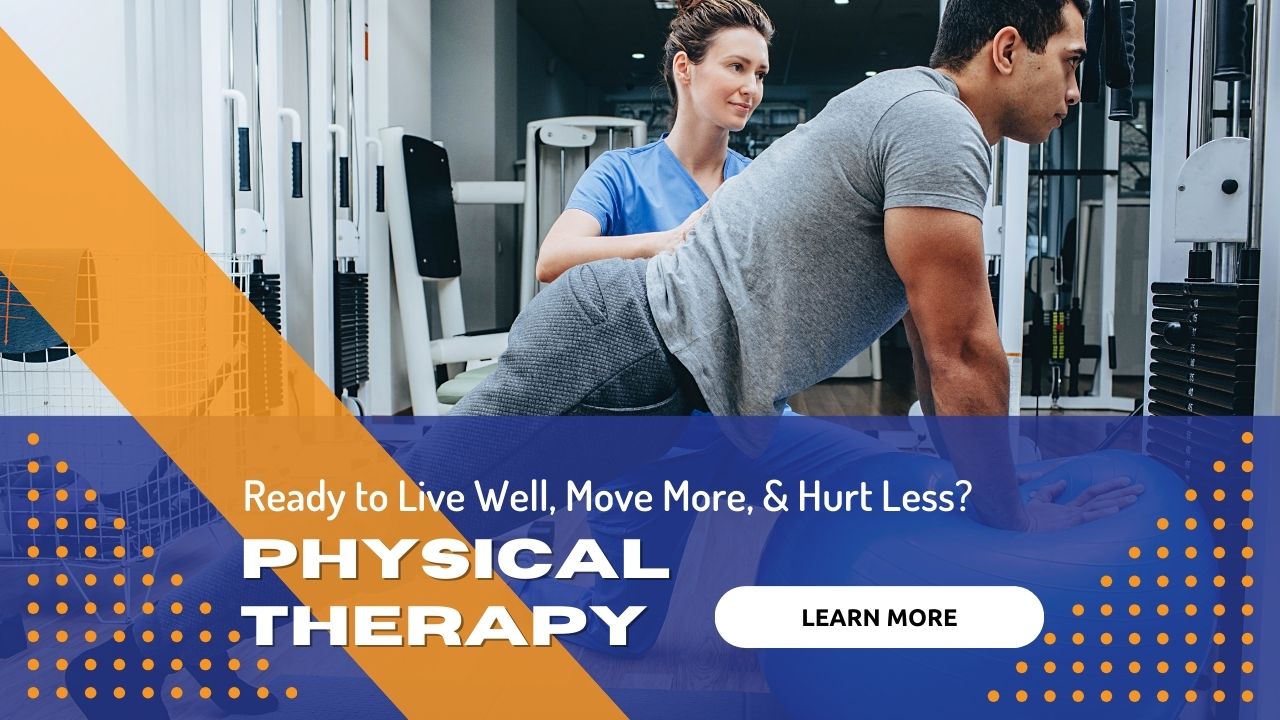

The Top 3 Exercises for Low Back Pain and Stiffness
During this time of year, we all want to freshen up our flower beds and gardens for planting new blooms, clean out the garage or attic to store away winter belongings and decorations, or try a new workout regimen to get in shape for our summer beach vacation. However, these strenuous spring time activities may lead to an episode of low back pain and stiffness.
There are many causes (muscle, ligament, disc, etc.) and risk factors (age, activity level, occupation, etc.) that contribute to low back stiffness. Unfortunately, about 80% of adults will experience low back pain in their lifetime. Low back pain is also a common reason why people call out of work. The good news is that research shows that back pain can be reduced by roughly 50% in those that exercise versus those that do not. Therefore, exercise is important for preventing onset and recurrence of low back pain or stiffness as well as decreasing the symptoms once stiffness has already set in.
Stiffness means the inability to move easily or the inability to move without resistance. If you ever rode a bike as a kid (or still do), you might recall at some point having difficulty with your chain not moving smoothly as you pedaled. Was your response to go park your bike and not ride it for the next month? No, you would spray some WD-40 on the chain and get back to riding. Movement is your WD-40 for low back pain and stiffness. Since no person is the same, some individuals will need more time and repetitions for their stiffness to resolve.
Here are my top three exercises to promote mobility for decreased low back pain and stiffness:
- Single knee to chest

2. Prone press up

3. Or try the modified version of this exercise on elbows

4. Lumbar rotation stretch

Key Points:
Do not perform these exercises within the first two hours after waking. Due to changes that occur in the lumbar discs overnight (diurnal changes), it may be best for some individuals to wait a few hours after waking before exercising. It is important to still get out of bed and perform your normal routine such as showering, dressing, or fixing a cup of coffee. Then once the body has had time to adjust to gravity and upright positioning, you can begin exercising.
The human body is meant to move! The best way to prevent low back stiffness if to avoid prolonged positioning. Although you may feel like lying in bed or sitting in your recliner for hours on end is most comfortable, it is not good for your low back stiffness. Your joints and muscles need to move in order to receive nutrition and blood flow for healing.
For tips when you are sleeping check out this article by sleepadvisor.org.
Mobility is only part of the puzzle. Core strength and flexibility are also important for reducing and preventing low back stiffness. Exercises like glute bridging, clamshells, quadruped, and squats are key components of a good low back exercise routine. Hip flexor and hamstring flexibility play a role in reducing strain on the low back as well.
Know the difference between “pain” and “strain”. It is ok to feel a “stretch” or “working” sensation DURING exercise. That is a normal response to movement, especially new movements. However, it is not normal to have pain that lasts 10-15 minutes AFTER you are done exercising.
Low back stiffness can easily turn to pain which is a sign of injury to the low back. Therefore, if you experience stiffness for more than a 1-2 weeks or your stiffness transitions to pain, you should reach out to your local physical therapist for an evaluation and individualized treatment plan.
-Dr. Courtney Beasley, Physical Therapist, Certified McKenzie Therapist
Please Share
categories
Recent Posts
categories

The Top 3 Exercises for Low Back Pain and Stiffness
During this time of year, we all want to freshen up our flower beds and gardens for planting new blooms, clean out the garage or attic to store away winter belongings and decorations, or try a new workout regimen to get in shape for our summer beach vacation. However, these strenuous spring time activities may lead to an episode of low back pain and stiffness.
There are many causes (muscle, ligament, disc, etc.) and risk factors (age, activity level, occupation, etc.) that contribute to low back stiffness. Unfortunately, about 80% of adults will experience low back pain in their lifetime. Low back pain is also a common reason why people call out of work. The good news is that research shows that back pain can be reduced by roughly 50% in those that exercise versus those that do not. Therefore, exercise is important for preventing onset and recurrence of low back pain or stiffness as well as decreasing the symptoms once stiffness has already set in.
Stiffness means the inability to move easily or the inability to move without resistance. If you ever rode a bike as a kid (or still do), you might recall at some point having difficulty with your chain not moving smoothly as you pedaled. Was your response to go park your bike and not ride it for the next month? No, you would spray some WD-40 on the chain and get back to riding. Movement is your WD-40 for low back pain and stiffness. Since no person is the same, some individuals will need more time and repetitions for their stiffness to resolve.
Here are my top three exercises to promote mobility for decreased low back pain and stiffness:
- Single knee to chest

2. Prone press up

3. Or try the modified version of this exercise on elbows

4. Lumbar rotation stretch

Key Points:
Do not perform these exercises within the first two hours after waking. Due to changes that occur in the lumbar discs overnight (diurnal changes), it may be best for some individuals to wait a few hours after waking before exercising. It is important to still get out of bed and perform your normal routine such as showering, dressing, or fixing a cup of coffee. Then once the body has had time to adjust to gravity and upright positioning, you can begin exercising.
The human body is meant to move! The best way to prevent low back stiffness if to avoid prolonged positioning. Although you may feel like lying in bed or sitting in your recliner for hours on end is most comfortable, it is not good for your low back stiffness. Your joints and muscles need to move in order to receive nutrition and blood flow for healing.
For tips when you are sleeping check out this article by sleepadvisor.org.
Mobility is only part of the puzzle. Core strength and flexibility are also important for reducing and preventing low back stiffness. Exercises like glute bridging, clamshells, quadruped, and squats are key components of a good low back exercise routine. Hip flexor and hamstring flexibility play a role in reducing strain on the low back as well.
Know the difference between “pain” and “strain”. It is ok to feel a “stretch” or “working” sensation DURING exercise. That is a normal response to movement, especially new movements. However, it is not normal to have pain that lasts 10-15 minutes AFTER you are done exercising.
Low back stiffness can easily turn to pain which is a sign of injury to the low back. Therefore, if you experience stiffness for more than a 1-2 weeks or your stiffness transitions to pain, you should reach out to your local physical therapist for an evaluation and individualized treatment plan.
-Dr. Courtney Beasley, Physical Therapist, Certified McKenzie Therapist
Please Share









